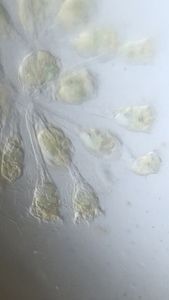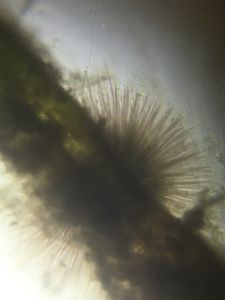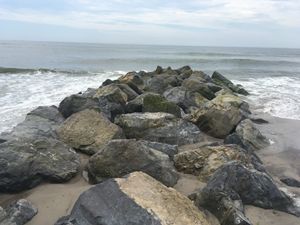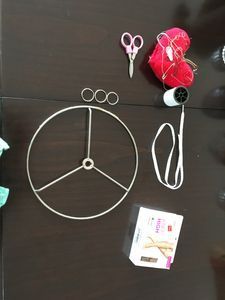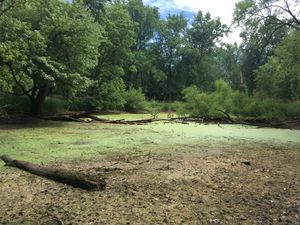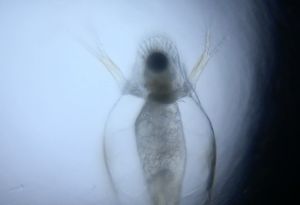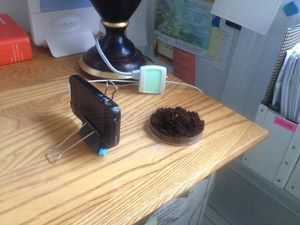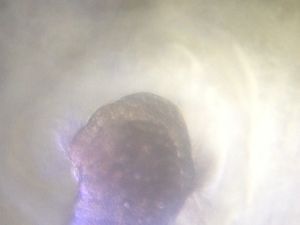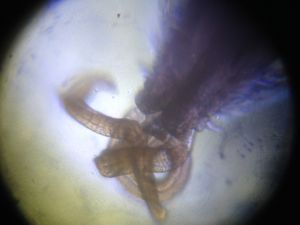A Model Creature: A Complete Drosophila Life Cycle
 Nov 05, 2015 • 11:21 PM UTC
Nov 05, 2015 • 11:21 PM UTC Unknown Location
Unknown Location 140x Magnification
140x Magnification Microorganisms
Microorganisms
Matthew Rossi
I'm a novelist, essayist, and a writing consultant. I work in the writing centers at Columbia and Baruch University and explore research into the overlap of maker cultures and writing. My work with the Foldscope tends to focus on finding wild creatures in urban spaces and looking at how human works are shaped by the movements of the biosphere.
40posts
105comments
4locations
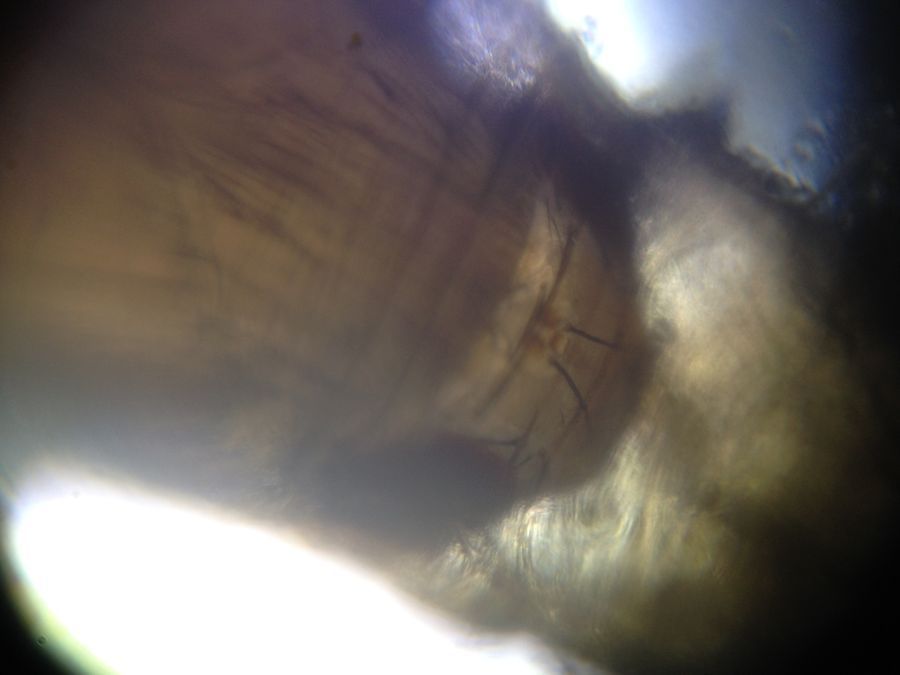
There is a question I feel I need to ask at the beginning of this post about how people choose which life to value. Why culturally people may eat one animal but not another, why an animal may be considered a pest or not. Why animal life may be better perceived over the lives of bacteria or a plant (once, while discussing beliefs around reincarnation, a friend asked me “What could I gain from being reincarnated by a tree?” but there were so many obvious things a person could learn from being a tree, the question baffled me).
This question of value determines so much about how people mold the ecosystem, and yet it seems like a really fraught one to me. What’s valuable seems contextual, so how does one choose when or how to value a creature?
I’m maybe a bit off topic here.
My household was recently blessed with a glut of fresh, orchard-picked Bosc pears. Along with them, whether attracted from the outside or carted into our house in the form of eggs, came a small plague of fruit flies (or vinegar flies, as one source tells me I should call them). Drosophila of some species or other (whether melanogaster or not, I don’t know). In the realm of tiny flying things, fruit flies have always been my favorite, but it was impossible not to notice how they seemed to attack our fruit as it ripened. Since Bosc pears ripen too quickly for words, our home became a perfect breeding ground, and the population exploded. As the last of the pears began to reach overripeness, I decided to cut off their food supply by cooking an apple-pear crisp.
It was here my curiosity was piqued. In one of the pears, I noticed a hole, and and investigation with a macro lens told me there were larva and eggs in the hole.
This question of value determines so much about how people mold the ecosystem, and yet it seems like a really fraught one to me. What’s valuable seems contextual, so how does one choose when or how to value a creature?
I’m maybe a bit off topic here.
My household was recently blessed with a glut of fresh, orchard-picked Bosc pears. Along with them, whether attracted from the outside or carted into our house in the form of eggs, came a small plague of fruit flies (or vinegar flies, as one source tells me I should call them). Drosophila of some species or other (whether melanogaster or not, I don’t know). In the realm of tiny flying things, fruit flies have always been my favorite, but it was impossible not to notice how they seemed to attack our fruit as it ripened. Since Bosc pears ripen too quickly for words, our home became a perfect breeding ground, and the population exploded. As the last of the pears began to reach overripeness, I decided to cut off their food supply by cooking an apple-pear crisp.
It was here my curiosity was piqued. In one of the pears, I noticed a hole, and and investigation with a macro lens told me there were larva and eggs in the hole.
With this, I was reminded that while the fruit fly is a pest to me, it is a valuable creature in science. So this was an opportunity to experiment a bit, and to watch a model creature engage in its earliest activities. Like many interactions through the microscope, it was an opportunity to rethink the value of the creature, its separateness from me, its place in my home. The first step was to free the larvae from the pear so I could get a closeup of them, which was no easy feat. First, I put them on a well slide, but could only get some blurry pictures of pear. Moving them to a flat slide, I could see the larvae pushing their way through the flesh and juice of the pear, sucking up microbes and sugar. In addition to the larvae, a clutch of unhatched eggs also came into view.
A low magnification view of the eggs reveals that there is a surprising amount of texture on them. You can see this in the lower right hand corner: there is a speckled pattern on the egg. Rather than it having a smooth shell, it’s ridged and full of dimples like a golf ball.
A low magnification view of the eggs reveals that there is a surprising amount of texture on them. You can see this in the lower right hand corner: there is a speckled pattern on the egg. Rather than it having a smooth shell, it’s ridged and full of dimples like a golf ball.
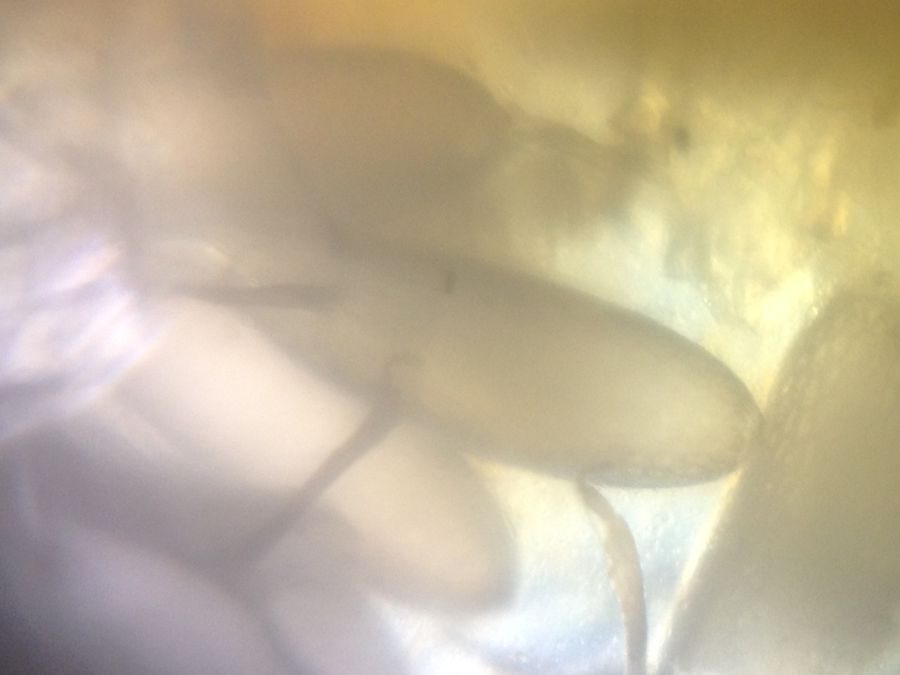
Wandering among the eggs, I found the larvae I’d been looking for. These are first instar larvae, completely translucent and less than a millimeter in length. They are voracious and single-minded in their eating, pushing through the soft pear flesh, blind (although apparently highly photophobic, which we’ll get to in a bit).
Their capacity to dig into the pear is sort of amazing. In a few instances, I turned away from the camera for just a moment, only to find my subjects had vanished. Here we see one burrowing into the pear.
This is one of the few times I’ve had an animal under the microscope small enough to safely view in high magnification, but slow-moving enough that I wouldn’t lose it in my view screen, so I took advantage of that. Under the high magnification, their feeding becomes a much clearer activity. You can see the track of their gut, the motion of their beak-like mouths.
With no eyes, it’s tough to tell anterior from posterior on these creatures, and you can see I got lost a couple of times trying to figure out which end was up. I also took a few close ups of their eggs, which allowed for a much better sense of the texture I observed earlier.
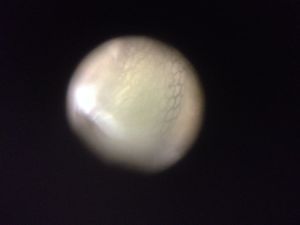
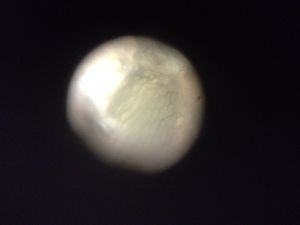
I wonder whether I’m looking at a dimpled texturing pattern, as I observed earlier, or if this is a pigment on the egg. Or is it a structure, like a webbing on the shell of the egg, giving it strength.
With a viewing of the first instar larvae finished, a question cropped up in my mind. I had a small plastic container full of rotting pear and some maggots. I had imaged the maggots and was done looking for the time being, but these were fruit flies. A famous sort of maggot. A scientifically valuable sort of maggot. So why should I toss them. Why shouldn’t I, instead, keep them and let their growth be a longer experiment.
Over the next few days, the small knob of pear flesh I had kept grew increasingly pungent and sour and increasingly translucent. I have no doubt that the activity of the larvae contributed to this. I checked on them occasionally for a couple of weeks (the long growth period tells me that it’s less likely these are melanogaster , which are famous for growing in about a week). In about two weeks, I observed the container again (I use a Diamond minicup, which, if you live in the US, is what condiments come in when you order takeout) and found, hiding under the pear, a fat, very visible grub about a centimeter long. This was a larva in the third instar phase.
Capturing the third instar on film proved difficult. The grub both was fast moving, even under a slide cover, and was heavily photophobic. My first attempts to look at it led to a lot of comedy with a tiny white worm fleeing across my desk while I tried to gather it back up without hurting it.
The solution to this that I found was a technique I’d tested on fruit flies, but never used before. I caught the grub again, put it into a Diamond cup, and put that into the refrigerator. The cool temperatures put the larva into a temporary coma, which allowed me to pin it under a slip cover and look at it.
Over the next few days, the small knob of pear flesh I had kept grew increasingly pungent and sour and increasingly translucent. I have no doubt that the activity of the larvae contributed to this. I checked on them occasionally for a couple of weeks (the long growth period tells me that it’s less likely these are melanogaster , which are famous for growing in about a week). In about two weeks, I observed the container again (I use a Diamond minicup, which, if you live in the US, is what condiments come in when you order takeout) and found, hiding under the pear, a fat, very visible grub about a centimeter long. This was a larva in the third instar phase.
Capturing the third instar on film proved difficult. The grub both was fast moving, even under a slide cover, and was heavily photophobic. My first attempts to look at it led to a lot of comedy with a tiny white worm fleeing across my desk while I tried to gather it back up without hurting it.
The solution to this that I found was a technique I’d tested on fruit flies, but never used before. I caught the grub again, put it into a Diamond cup, and put that into the refrigerator. The cool temperatures put the larva into a temporary coma, which allowed me to pin it under a slip cover and look at it.
Several features you can see clearly are the hooks around its jaws (the bristling structures around the mouth), which the larvae seem to use to grab hold of their food.
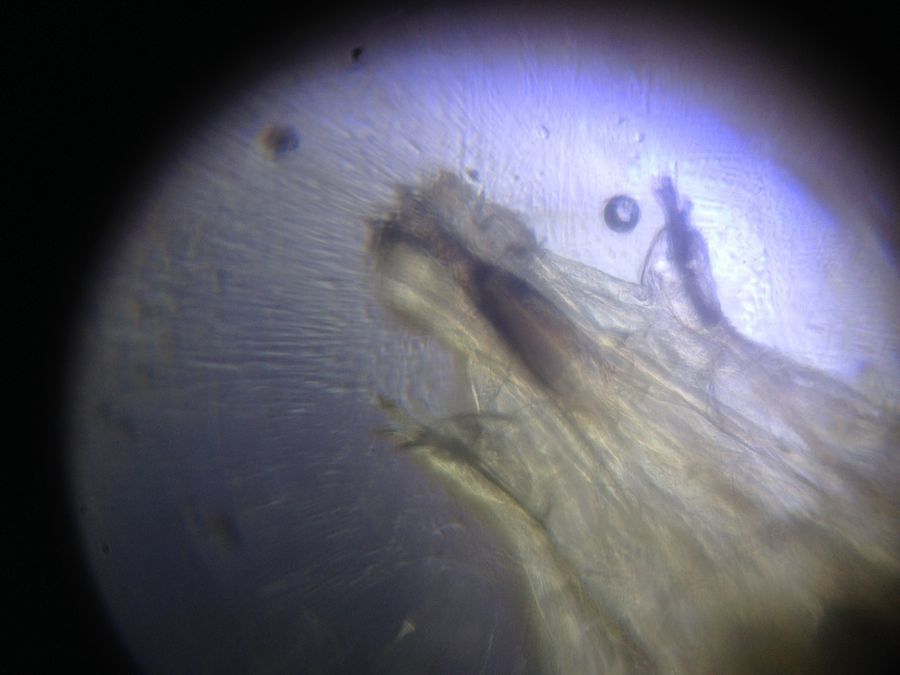
You can also see a clear view of the track of its gut, the curve of its intestines. It’s less obvious where the gut pours out, leading me to wonder whether the creature has an anus at this phase. I know there are creatures that don’t excrete waste (or excrete it in other ways) and I wonder whether this is one.
When I zoom in on parts of the third instar, I also notice, nestled among its organs, what appear to be the early structures that would eventually develop into wings.
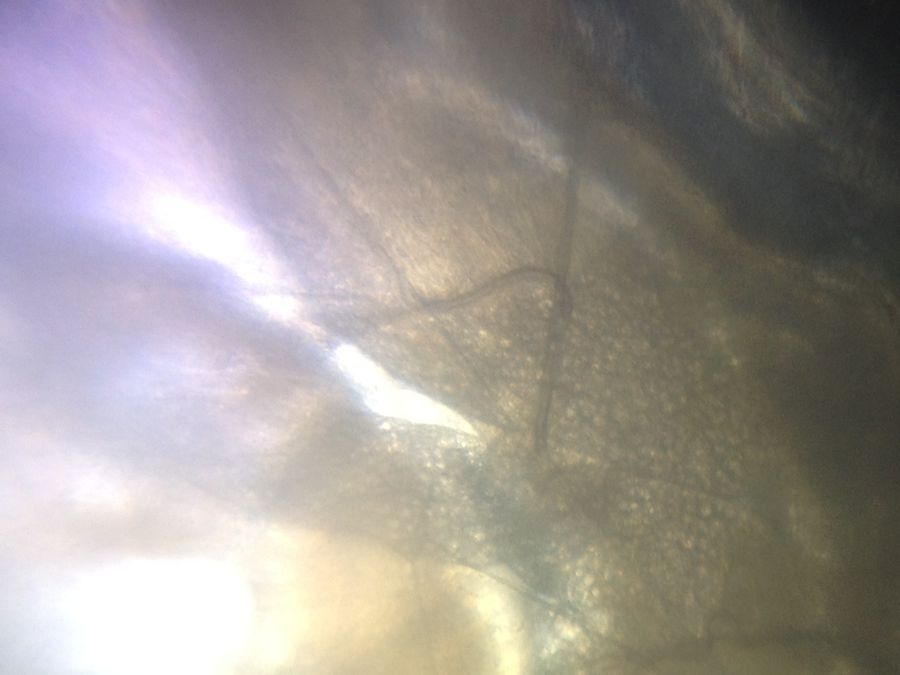
Also present in the cup on this day were six or seven pupae, small and beige, like grains of brown rice. In some, the larva was still clearly present, the process of pupation not yet fully begun.
In others, all form had gone out the window.
Metamorphosis fascinates me. How does a creature transform itself, first into a kind of self-generated incubation tank, and then into a whole new creature? A friend of mine and I recently discussed this, and he asked me whether, during the metamorphosis, the entire creature undergoes a hard reboot, or whether parts of it stay the same. I truly didn’t know, but looking at the video below, it seems like it retains at least its most vital parts. And considering the protowings in the developed larva (a trait I know is present in some caterpillars, as well), it seems the larva, at least in part, has some traits of the adult, but for the most part, it seems they serve almost as a battery. An eating machine built to gather raw materials and energy for this transformation into an adult.
Metamorphosis fascinates me. How does a creature transform itself, first into a kind of self-generated incubation tank, and then into a whole new creature? A friend of mine and I recently discussed this, and he asked me whether, during the metamorphosis, the entire creature undergoes a hard reboot, or whether parts of it stay the same. I truly didn’t know, but looking at the video below, it seems like it retains at least its most vital parts. And considering the protowings in the developed larva (a trait I know is present in some caterpillars, as well), it seems the larva, at least in part, has some traits of the adult, but for the most part, it seems they serve almost as a battery. An eating machine built to gather raw materials and energy for this transformation into an adult.
It is tempting for me to anthropomorphize them a bit at this point, to suggest that they’re not so different in this way from human children (who seem to eat pears with equal verve to the Drosophila larvae), but I think that stage of humanizing them ignores what a clever move of evolution this is, how this dramatic shift between the adult and the child allows the insect to reproduce at an exceptional rate.
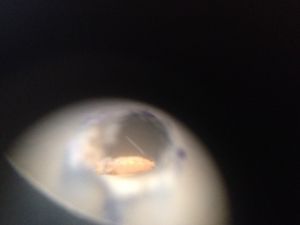

Over the next few days, I continued to image the pupae as their eyes developed. In the interim stages, the pupa took an indistinct form. Only a brownish white appeared in it until it developed a more clearly defined insect form. As the time came for them to hatch, their eyes became much more evident, and even their wings were visible through the pupa’s shell. You can even see the fine hairs on the fly evident in these photos and video.
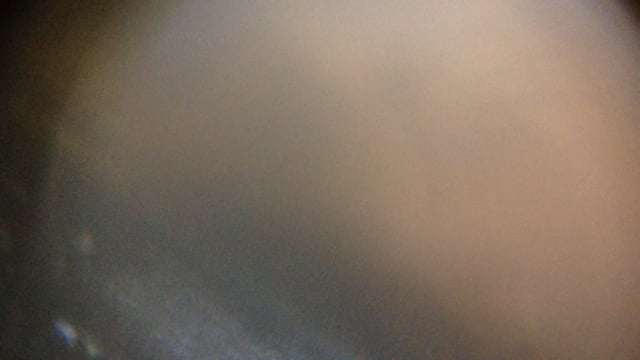

A day later, the formerly still container had several small flies moving around in it. Over the course of the day, most of the pupae opened, and the mature fly came out with its wings wrinkled and folded against its back. Here, I used the refrigeration technique again to knock the fly out and observe it.
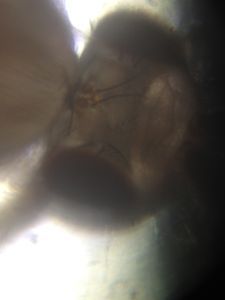
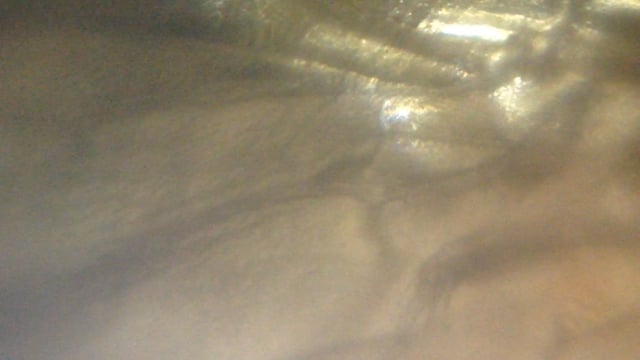
A closer look gives us a better view of the hairs on its head, and what appear to be three eyes or light sensitive spots on top of its head, as well.
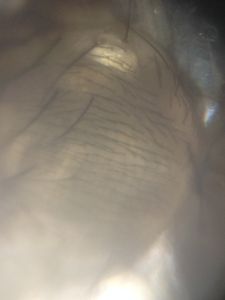
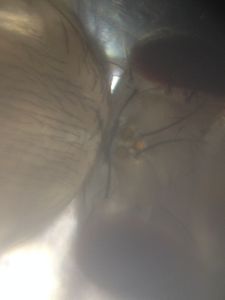
After a few minutes on the slide, it began to move its mouth, as well. Possibly tasting its environment for more information about where it was.
I could, I suppose, have kept these flies in perpetuity. A little bad fruit, a little jar, and I could have had fruit flies forever, I think. This comes down to the question of value again. Which is to say, how do I convert a creature that was eating something of mine into something that is, for all intents and purposes, a pet? Do I value the fruit flies in their Diamond cups more than the ones who still fly around my house? Do I value them equally to my cat?
Or, to reframe the question a bit, is the fruit the Drosophila eat actually mine? Is it me who is chowing down on their brood chambers? The answer, I suppose, is “Yes,” that it’s both of those, that the perception of scale the microscope forces us to engage in isn’t one that allows standard borders to remain as one thing or another, but rather that my space and their space is in a kind of quantum uncertainty at all times, belonging to neither of us fully. In that case, when I release them into the streets, I maybe was not releasing them back into the wild, but effectively banishing them.
Or, to reframe the question a bit, is the fruit the Drosophila eat actually mine? Is it me who is chowing down on their brood chambers? The answer, I suppose, is “Yes,” that it’s both of those, that the perception of scale the microscope forces us to engage in isn’t one that allows standard borders to remain as one thing or another, but rather that my space and their space is in a kind of quantum uncertainty at all times, belonging to neither of us fully. In that case, when I release them into the streets, I maybe was not releasing them back into the wild, but effectively banishing them.
Sign in to commentNobody has commented yet... Share your thoughts with the author and start the discussion!
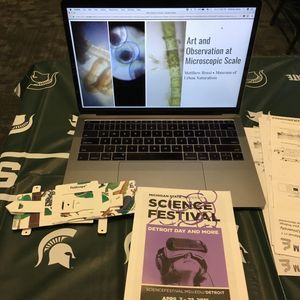
 0 Applause
0 Applause 0 Comments
0 Comments




